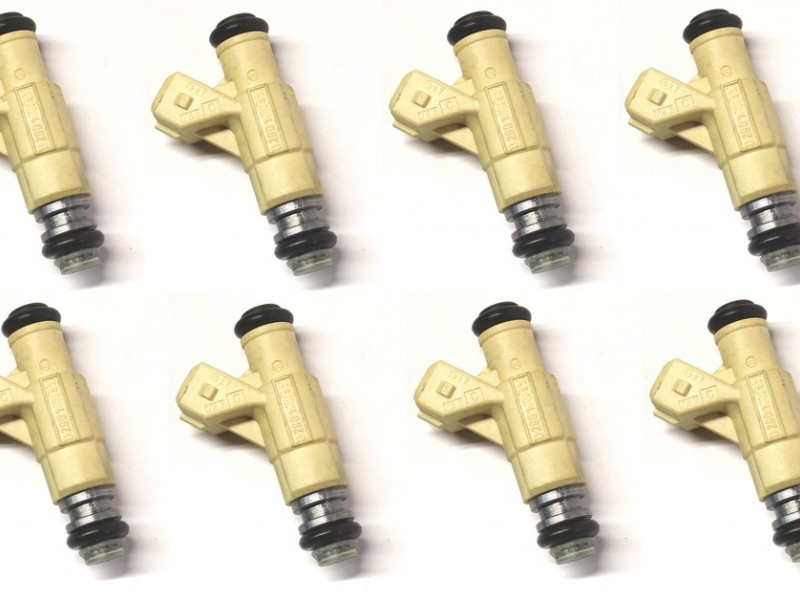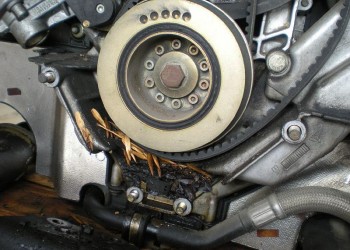Is your Land Rover’s fuel injector giving you trouble? It might be time to replace it. Instead of paying a professional a lot of money to do it, you can learn to replace it yourself. Even if you do not know much about cars, it is easy to understand what a fuel injector is and how to replace one in your Land Rover.
A fuel injector ensures the smooth functioning of the vehicle by managing the fuel to air ratio your car needs. Hence, a fuel injector is an integral part of your engine. You will find that fuel injectors work somewhat differently in petrol and diesel Land Rovers.
In this article, we will explore these differences as well as everything you need to know about your car’s fuel injector.
What is a Land Rover Fuel Injector?
Firstly, you need to understand that if your engine is going to run steadily it needs good management of air to fuel ratios. Air to fuel ratio is essentially the level of oxygen that is needed by the engine to burn fuel. If there is too much oxygen (air), the car will jerk. If there is too much fuel, the car will give a burning effect and start smoking.
Therefore, a fuel injector is kept in place to balance the ratio and prevents this from happening.
If you look under the hood of your Land Rover, you will find a comprehensive fuel system. The fuel injector is located above the fuel pump. It will have four cylinders connected to one tube (which in turn connects to the fuel pump.) In petrol Land Rovers, this system will be indirect.
The fuel pump distributes the petrol in the engine. It will send the petrol to the engine bay after which it will be ‘injected’ into one of the four cylinders. Thus, the cylinders will act as a spray nozzle and spray the petrol into an inlet manifold.
Consequently, the petrol will merge with the air and go on to be dispersed in the combustion chamber. This is done indirectly to ensure that the fuel and air are well-mixed.
In diesel Land Rovers, the fuel is directly injected into the cylinders. Fuel injector cylinders in diesel cars have compressed air inside. Hence, there is no need for the fuel to be sprayed into an inlet manifold. It can then directly be pumped into the combustion chamber.
What Happens When a Fuel Injector is Faulty?
If something goes wrong with your fuel injector, you car may display some of the following symptoms:
- - Your Check Engine light is on
- - There is a gasoline leakage
- - You smell unburnt fuel
- - The temperature of your engine is fluctuating unusually
- - Your car does not work when it is warm
- - Poor acceleration
- - Your engine misfires
- - The engine vibrates or makes sounds
- - Engine idle is rough
- - Your fuel economy is poor
Is it Safe to Drive Your Land Rover With a Faulty Fuel Injector?
You can drive with a faulty fuel injector as long as there is no gasoline leakage. However, you need to be careful. If your fuel injector has broken down, it can cause your engine to overload and overheat. Furthermore, your engine may misfire, which can seem pretty scary.
Also, driving with a faulty fuel injector reduces your fuel economy so be mindful of that.
How Much Does It Cost to Replace One on Average?
If you are looking to replace one through a mechanic, the price ranges from $855.02 to $3,324.29. Prices depend on the model and make of your Land Rover. If you bring your car to your local garage, they will tell you the estimates of the replacement.
Moreover, you can also choose to use a mobile technician via this website. The mobile techs tell you the cost of replacement without you leaving the house.
How to Replace A Fuel Injector in Your Land Rover?
If you choose to forgo the mechanic and try to DIY the replacement, you do not have to fret. It is a pretty straightforward process. Firstly, you can either service your current fuel injector or replace it with a new one. If you choose to service, you will need special cleaning and testing tools. You can find those here.
However, if your fuel injector cannot be salvaged, you will need to buy a new one. You can get great products for Land Rovers and Range Rovers on this website.
Either way, your fuel injector needs to be removed. Here is a step-by-step guide on how to do so:
Initial Steps
- 1. Make sure the engine is cold
- 2. Take out the fuel pump fuse
- 3. Run the engine to relieve the pressure from the fuel rail
Removing the Fuel Injector
- 1. The inlet manifold (has four cylinders) has an upper plenum. Remove that along with any cables or wires that may be blocking your access.
- 2. Remove the supply and return lines from the fuel rail
- 3. Each fuel injector will have an electrical connector. You will need to unlock and remove these as well.
- 4. Unbolt the fuel rail and take it out of the inlet manifold
- 5. Identify the fuel injectors in need of replacement
- 6. There will be an O-shaped ring holding the injectors in place. Remove the ring to detach them from the fuel rail
- 7. Make sure the exposed openings are clean and safe from debris
Re-inserting the Fuel Injector
- 1. Take another O-shaped ring. Here is a good one.
- 2. Lubricate the ring using engine oil. This prevents damage.
- 3. Use the ring to re-insert the replaced injectors. Make sure to fit the ring tightly to avoid fuel leaks.
- 4. Re-install the fuel rail
- 5. Re-connect the supply and return lines
- 6. Put back the upper plenum and any cables or wires that were there before
Final Steps
- 1. Run the engine to see if all is working smoothly
- 2. Take the Land Rover for a test drive
If the Check Engine light has turned off and there is no other symptom, you have successfully replaced your fuel injector.
Things to Consider When Replacing Your Fuel Injector
Firstly, it is better to service all of your fuel injectors at the same time. Even if the issue is only with one or two, experts recommend that you service/replace all of them. This is so you do not have to keep removing and replacing parts from your engine.
Servicing or replacing all of them at once makes sure your engine runs smoothly. Consequently, the flow rates of your fuel injectors stay balanced.
Secondly, make sure the cleaning equipment you are using is approved by your manufacturer. You can simply find this information in your Land Rover’s owner’s manual.
Also, consider getting a full fuel injector servicing or replacing when you are getting a major engine repair done. It is an easy job for a mechanic when the engine is already being taken apart, and it can save you money in the long run.
Conclusion
In sum, replacing fuel injectors in your Land Rovers may seem like a tedious job. However, if you follow the steps properly you can do it. If you need additional guidance, there are many YouTube videos that show how it is done. We hope our guide was informative and helpful.
If you are looking for more on Land Rovers, you can see accessories and other car parts here.






0 comments